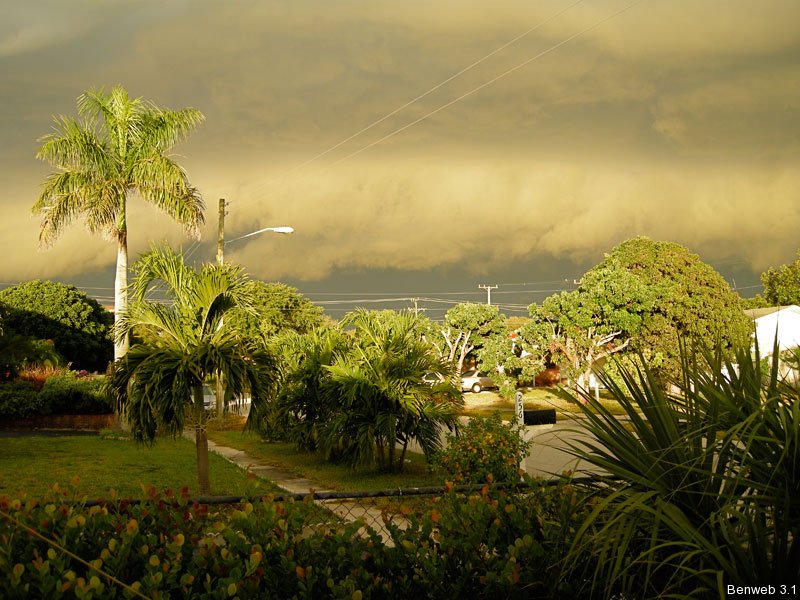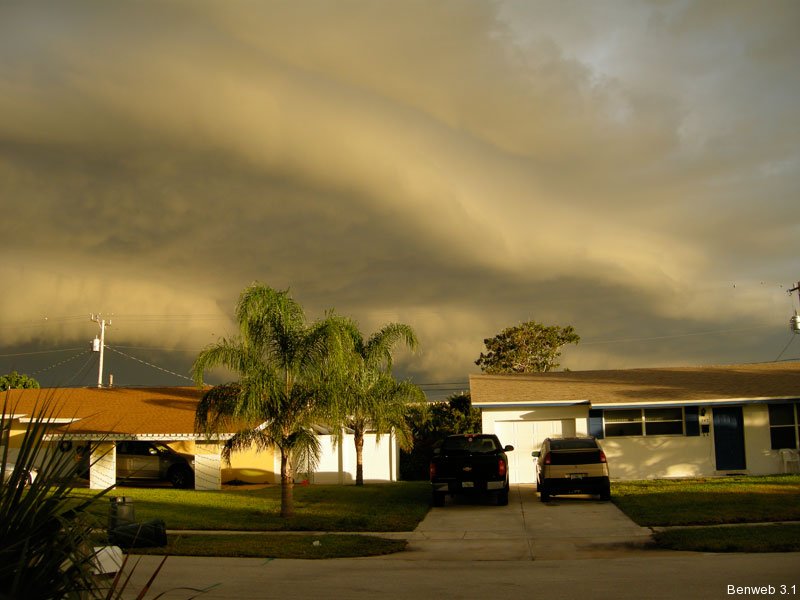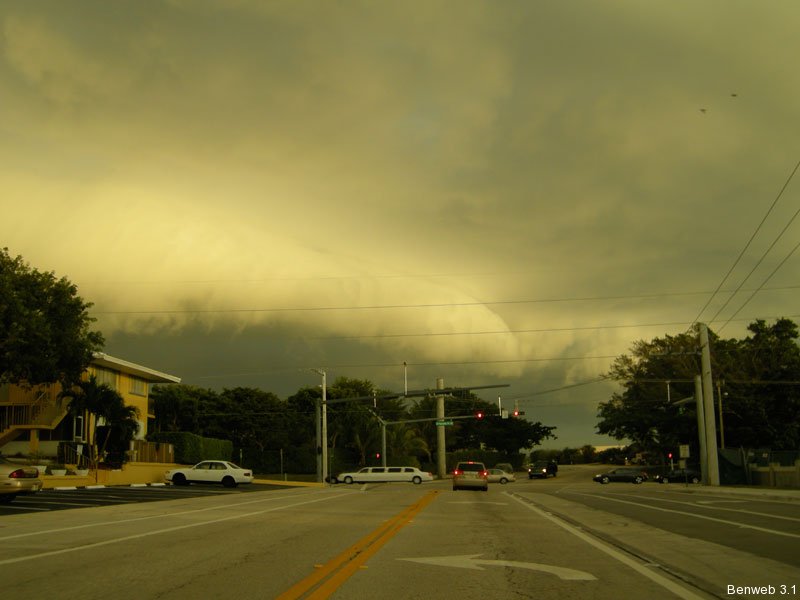Clouds in Florida are a photographer’s dream. They’re not really my dream, but that’s because I’m not a real photographer, and don’t have the technical skills or the patience to work long enough to capture cloudscapes on film/CCD. But there are people who do have the time and the skill; anyone who’s seen the work of Clyde Butcher will tell you that cloudscapes are to Florida what mountainscapes are to Yosemite.
I first noticed the clouds here when I was 14 years old, in the backseat of my daddy’s plane (a VariEze, if you must know). We were on a round-the-country (literally, we flew the perimeter of the country) trip, and had made it to Florida after stopping in El Paso, then Houston. That’s right–it took us 3 days to cross the country by air, and we had to spend 2 nights in Texas! That’s one big state…
Anyway, the clouds, when we arrived in Florida on my first–and, I assumed at the time, only–visit to this strange strange land, were much closer to the ground than I was used to. Back in California, the clouds seemed to be mostly cirrus or cumulonimbus–either high and wispy, or low and rainy. But even the low and rainy clouds in SoCal seemed to be much higher than the low and rainy clouds here.
The other thing I immediately noticed about the clouds here was that they were much smaller; from our aerial perspective, they looked like little popcorn balls. (Our aerial perspective was not quite so elevated as the one in the link!)
The clouds in SoCal were always high up, far from the dry ground; when it rained, it rained for days.
Here in Florida, the clouds were so low that they threatened our VFR ceiling; we had to sort of bend the rules to be able to fly at all. (There was plenty of room between each cloud, so we weren’t really in any danger; we just didn’t know how to interpret this unfamiliar sky!)
I also noticed that, even though it was April, it was much warmer and more humid here in Florida than it had been at my dry desert home in SoCal. (Earlier on the trip, as we descended on Brownsville, TX, we noticed it while we were still thousands of feet above the ground!) I suppose the higher humidity and temperature help explain why the clouds can form so much lower; with so much more humidity near the ground, the water in the clouds doesn’t have to travel far to accumulate? (I need to look this up somewhere, for a follow-up post… To get me started, there’s a useful spot for determining cloud height (and type) here.)
Anyhow, back to the present: that trip back in 1984 was not my only experience with Florida and its clouds. This morning as I was getting ready to head in to work, I was stopped by the amazing interplay of these low stratus clouds with the low angle of the rising sun; it was truly remarkable. As I drove down one of the main streets in town, I actually saw other drivers craning their necks to look up at the sky as well. And here’s why:
The interaction of light and cloud is truly an arresting experience when you see it in person; photos frequently fail to capture it. It’s technically demanding work, and very difficult to execute properly. That’s why the photographers who are able to do it, like Butcher, like Ansel Adams, can actually make a living at what they do.
Related Images:
no images were found





Hi Ben, Your cloud photos are wonderful. I love how the slide shows photos on your site merge. (Can’t think of the right word for those bubbles and checks, but it’s very fun.)
Thanks for the link to Clyde Butcher. His work is beautiful.
Happy day. Jan